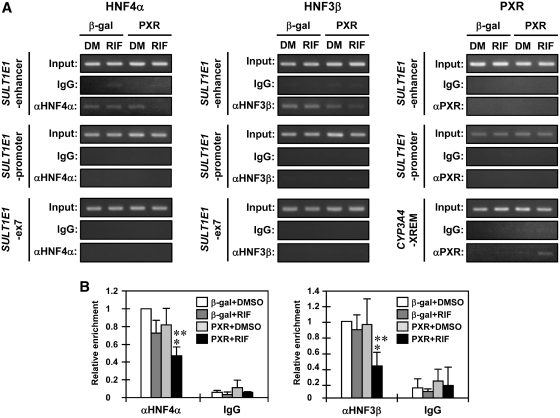Figure 7.
PXR prevents HNF4α and HNF3β from binding to the 100 bp enhancer. Huh7 cells were infected with adeno-β-gal or adeno-hPXR for 30 h, treated with RIF or DMSO (DM) for another 2 h in FBS-free MEM and then subjected to ChIP assays using normal IgG, anti-HNF4α antibody, anti-HNF3β antibody or anti-human PXR antibody. (A) From the immunoprecipitated DNA fragments, the SULT1E1 enhancer, SULT1E1 promoter and SULT1E1-ex7 were amplified by PCR. The region containing the DR3 sequence in the CYP3A4 gene was also amplified for CYP3A4-XREM as a positive control for PXR activity. (B) The relative enrichment of the SULT1E1 enhancer in the immunoprecipitated DNA fragments with anti-HNF4α and anti-HNF3β antibodies was determined by real-time PCR. Values are normalized by amplification in sample inputs and expressed by taking those in the DMSO-treated Huh7 cells infected with adeno-β-gal as one. Bars represent the mean ± SD. *P < 0.05 (β-gal + RIF versus PXR + RIF); **P < 0.05 (PXR + DMSO versus PXR + RIF).

